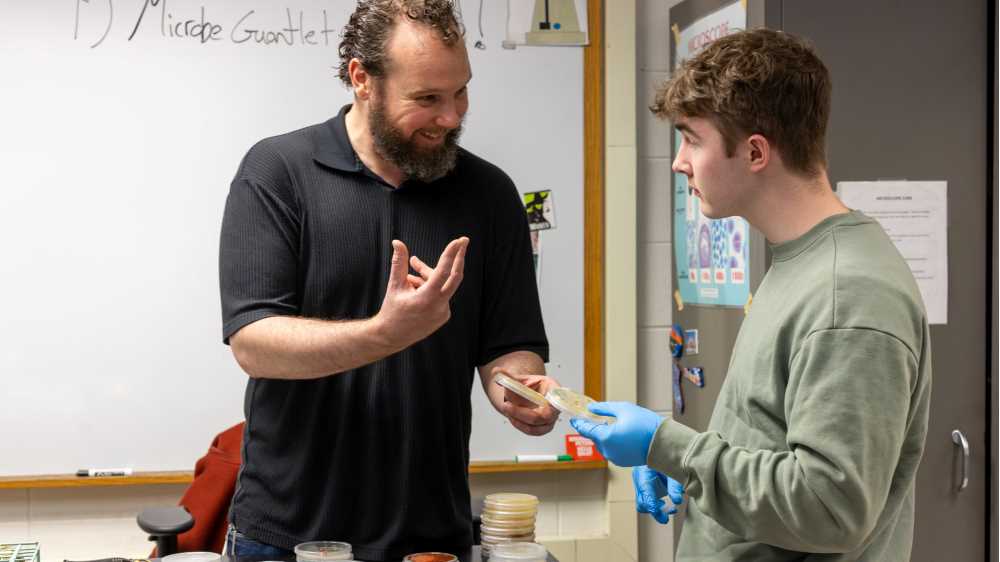Posted 10 a.m. Tuesday, April 22, 2025

Mycology students get hands on, in search of medical breakthroughs
In 1928, Scottish physician Alexander Fleming made a monumental discovery entirely by accident.
One day, while researching Staphylococcus bacteria, Fleming noticed mold growing in one of his petri dishes — and not just growing, but killing the bacteria he had placed there. This is the story behind penicillin.
Now, nearly a century later, UW-La Crosse students in Arthur Grupe’s Medical Mycology course are taking a similar approach in search of new discoveries.
Grupe’s students have spent the spring semester extracting fungi from the world around them — from kitchen cupboards, fruits and vegetables, air and water — and testing their ability to kill bacteria associated with various human infections.

“A big part of the class, and the lab, is based on identification of fungal pathogens and understanding that there are only a few classes of antifungal drugs we currently have available, versus the eight to 12 major classes of antibiotics,” says Grupe, assistant professor of biology. “Some students have found fungi that are capable of killing bacteria, which is a major and exciting discovery. While further study is needed, some of these students might discover a novel antibiotic that could help fight the antibiotic resistance we are seeing today.”
Students say they have enjoyed the project not just for the hands-on component, but for the chance to pursue breakthroughs with potentially significant real-world applications.
“What I have enjoyed from this class so far was seeing all the interesting things that I grew from my unknown sample (from my dog),” says Lily Radue, a senior microbiology major. “It was very informative. One particular culture I isolated shows antibiotic but not necessarily antifungal properties.”
Claire Holden, a senior majoring in psychology, says she appreciates Grupe’s passion for mycology and creating experiential learning opportunities.
“In class, we have focused on learning about fungal pathogens and the need for more available antifungals,” Holden says. “I've learned how to culture and identify many fungal species that commonly exist in our environment and even in humans. I've enjoyed gaining hands-on experience that connects classroom learning with fungi cultures.”
Grupe launched the project in spring 2024, his first time teaching the Medical Mycology course. He hopes it will continue to grow and evolve in future semesters, with each new wave of students contributing its own discoveries.
For students, it’s the type of formative, career-oriented experience that can only happen through hands-on learning, Grupe says.
“This project, and the class, gives students critical experience with skills that they can take with them into the medical field as researchers in industry or academia,” Grupe explains. “They learn how to safely work with these fungi, isolate them from the environment, screen them for potentially useful medical compounds, and identify fungi using traditional lab techniques and DNA sequencing. These skills are in high demand for folks working in labs, hospitals, government agencies and industry.”

